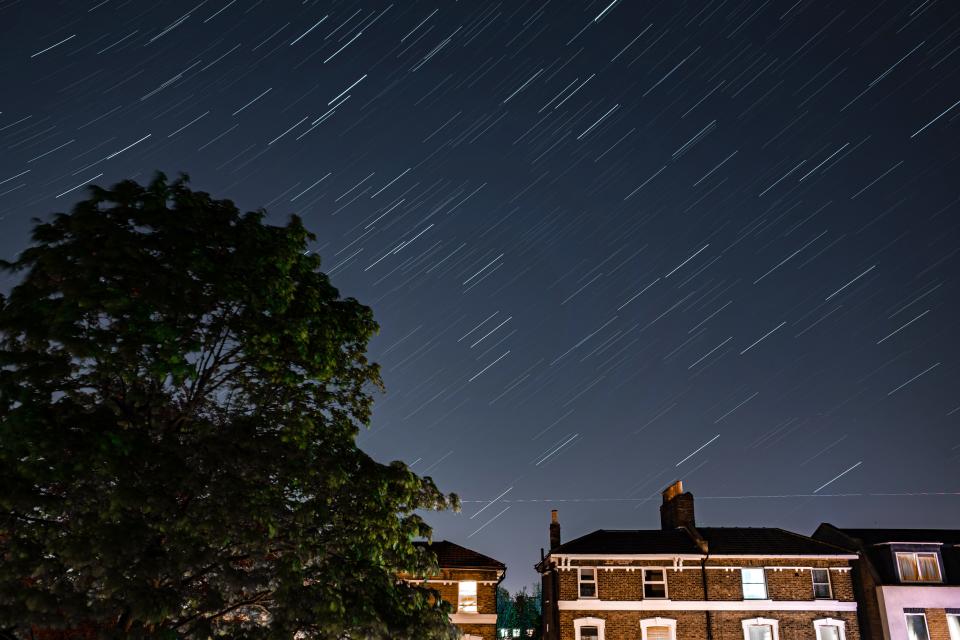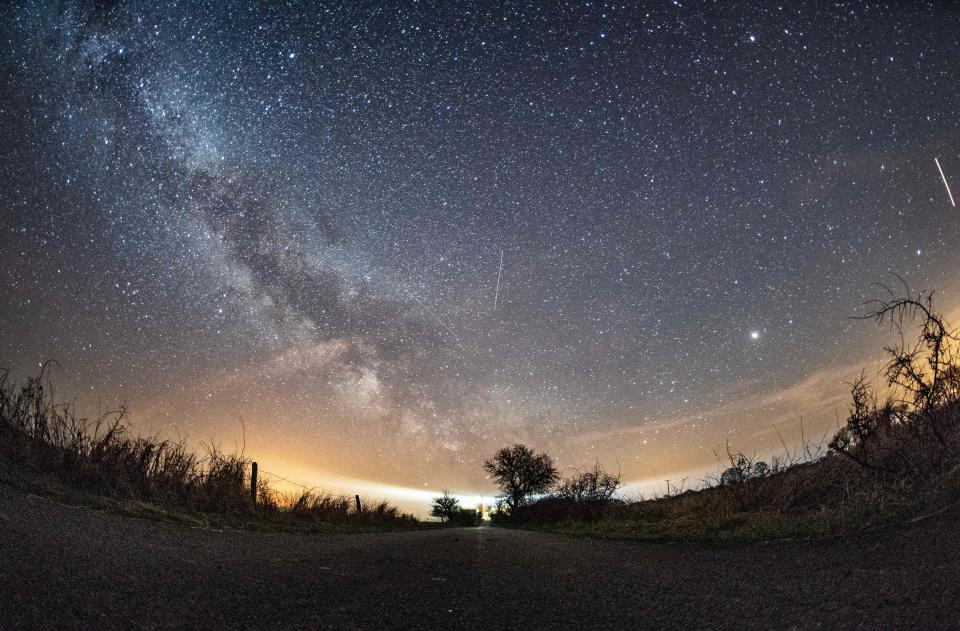You still have a little time to see the Lyrid meteor showers. Here are your best bets
Didn't get enough of astronomical events from the solar eclipse? Well, you're in luck.
One of the oldest known meteor showers, Lyrid will continue to be visible in the Northern Hemisphere over the next week. The event will be longer and later than the solar eclipse. So be prepared to break out a blanket, some snacks and a telescope for the Lyrid shower over the next week.
Here is what you need to know about seeing the Lyrid shower from Iowa.
When is the Lyrid meteor shower?
Lyrid shower started on April 15 and will remain active until April 29. Peak activity is predicted on April 23, according to NASA.
How to find the Lyrid meteor shower tonight?

Those looking for Lyrids may have to put in some work because visibility may be low due to light pollution and a bright moon, said Caroline Roberts, University of Iowa's astronomy lab coordinator.
The best time to catch the Lyrid shower is during the dark hours, after moonset and before dawn, according to NASA. The radiant, or the area in the sky where the Lyrids appear to come, is near the Lyra constellation. This is near the star Vega, which is one of the brightest stars in the sky, according to NASA.
"Go out into a place where it is quite dark," Roberts said. "Any park that is open later or possibly if you know a favorite farm, the ideal thing is to look up and get a full clear view of the sky."
Iowa's state parks are open until 10:30 p.m. County parks in Polk and Story counties are open until 10:30 p.m. and parks in Dallas County are open until 10 p.m.
Tips for viewing the Lyrid meteor shower from Iowa
Consider heading out to the rural areas of Iowa to avoid city lights and streetlights. There won't be long glowing dust trails behind the meteors. Instead, you can identify the shower by the occasional bright flash called a fireball, according to NASA.
It is also helpful to lie down on the ground to see as much of the sky as possible. Spend 30 minutes in the dark to allow your eyes to adjust to see the meteors, according to NASA.
While you don't want an obstructed sky, Roberts said having a small building or tree to cover the bright moon would help improve visibility. Look into the northeastern sky and view during the late evening or early morning. As the night goes on, the source of the Lyrids will rise more north, Roberts said.
"So look roughly in the northeast direction," she said. "Really viewing the whole sky is what's important for meteor shower observations. They could almost be anywhere in the sky, so having the whole sky visible and viewable so that when one little meteor scraps across the sky, you are looking."
Don't bother with telescopes or binoculars. Using either of those tools will limit your view of the sky decreasing your odds of seeing a meteor, Roberts said.
"Get comfortable, allow your eyes to adjust and let your eyes take in as much of the sky as possible," Roberts said.
How many meteors can I see during the Lyrid shower?

You could catch anywhere from 10 to 20 Lyrid meteors per hour during the peak time. They will travel 29 miles per second, according to NASA. Roberts compared Lyrids to what is depicted as shooting stars. While meteors are different than shooting stars, they also streak across the sky for a fraction of a second.
"The majority of them will be a second long or shorter," Roberts said. "But when you think of a stereotypical like a shooting star, that's what a meteor is but again it isn't a star at all."
Kate Kealey is a general assignment reporter for the Register. Reach her at kkealey@registermedia.com or follow her on Twitter at @Kkealey17.
This article originally appeared on Des Moines Register: The Lyrid meteor showers are peaking. How to see tonight in Iowa

